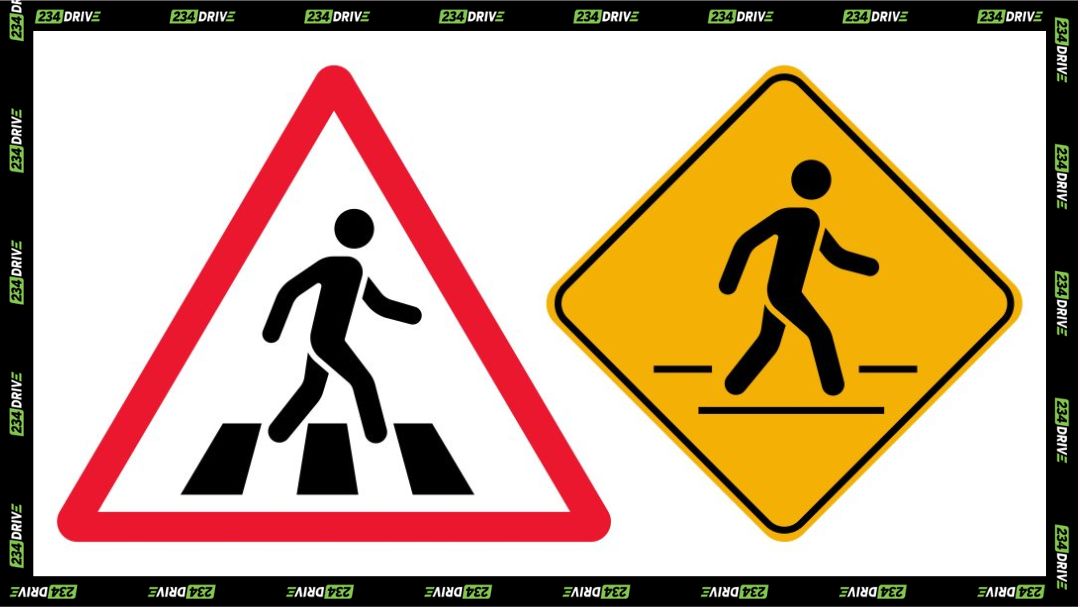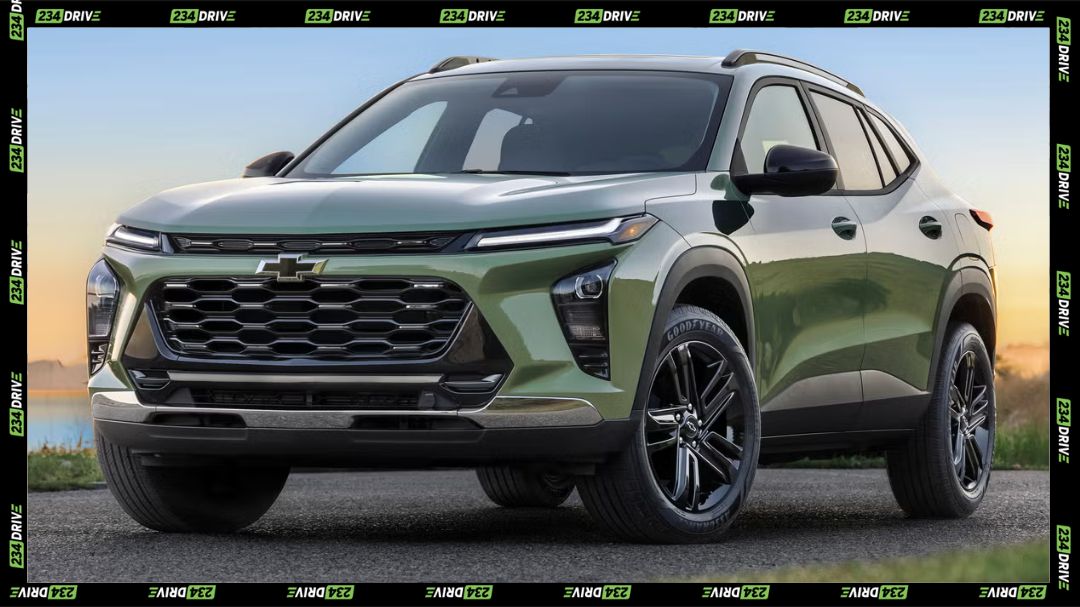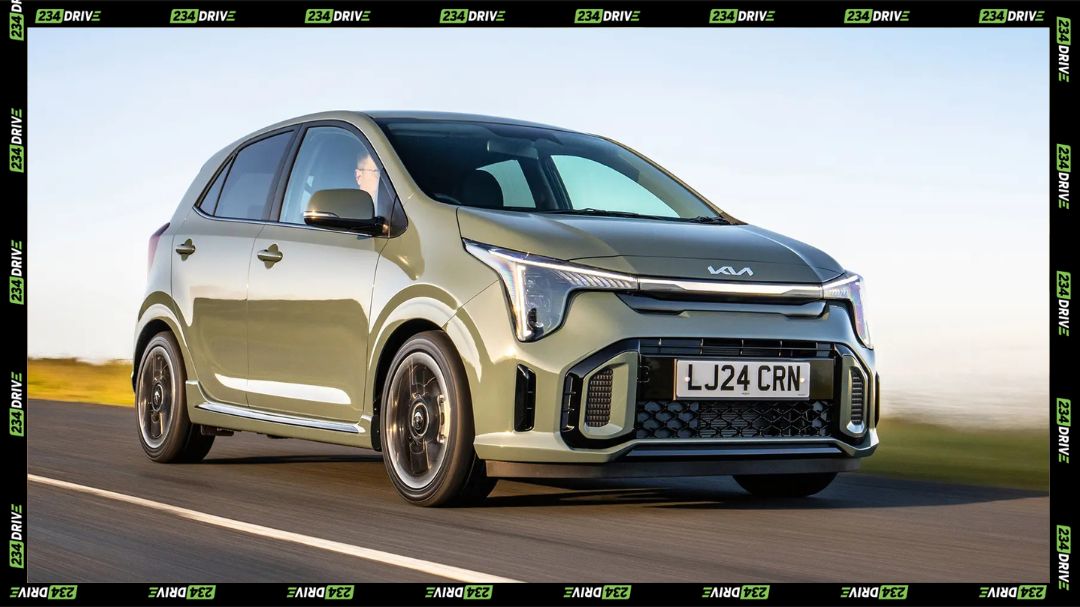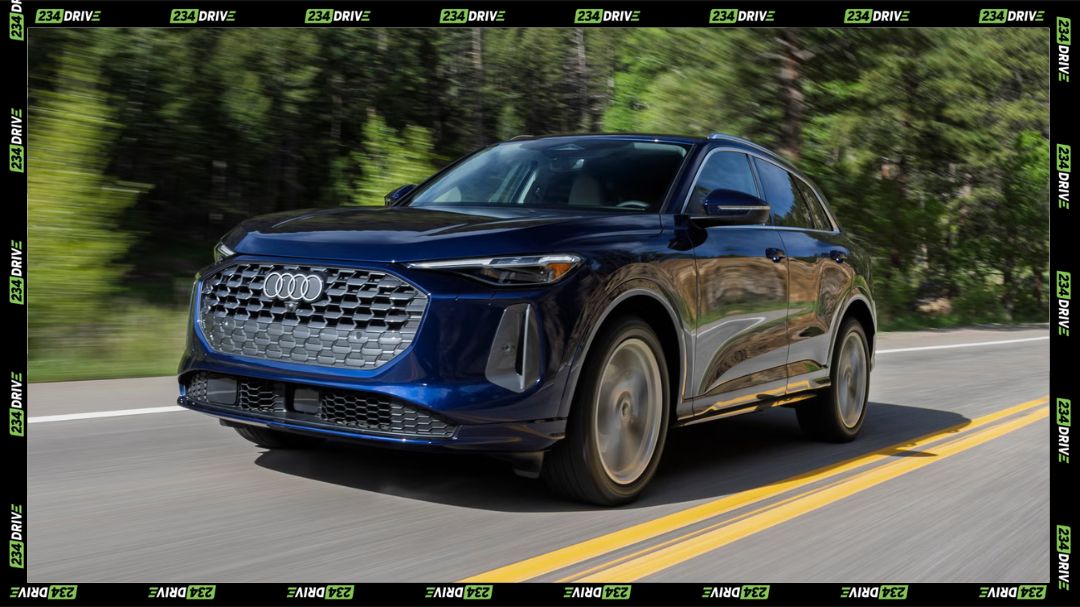Road signs in Nigeria are essential for safe and orderly driving. Whether you’re preparing for your test or navigating daily traffic, understanding them helps avoid fines, confusion, and accidents. Whether you’re cruising through Lagos traffic or navigating rural roads in Kaduna, knowing what each road sign means is essential. Nigeria’s road signs follow a mix of international standards and localised symbols, as outlined in the Nigeria Highway Manual. They’re grouped into three major categories: Regulatory, Warning, and Informative signs. Each plays a unique role in controlling traffic, reducing accidents, and guiding drivers.
Naija – Majoring the Minor – 2. Source: Pinterest
Why Understanding Nigerian Road Signs Matters
Road signs are silent traffic officers. They maintain order, prevent confusion, and communicate what’s expected of road users without a single spoken word. With Nigeria’s increasing road traffic and urban congestion, these signs are more relevant than ever. According to the Federal Ministry of Housing and Urban Development, adherence to traffic signs reduces road accidents and improves travel efficiency. Still, many drivers and pedestrians overlook them—or worse, ignore them. It’s one of the issues highlighted in this article about Nigeria’s car maintenance culture, where lack of attention to road rules often contributes to bigger problems.
Categories of Nigerian Road Signs
Most Common Road Signs and Their Interpretations. Source Autovin
Nigerian road signs fall into three main categories:
- Regulatory Signs – These are mandatory signs that must be obeyed. Disobeying them often leads to fines or more severe penalties.
- Warning Signs – These alert you to road hazards or changes in road conditions.
- Informative Signs – These guide or inform road users about locations, directions, services, or other useful data.
This categorisation aligns with global traffic conventions like the Vienna Convention on Road Signs and Signals, but Nigeria’s version incorporates local variations for regional clarity.
Regulatory Signs in Nigeria
Regulatory signs are the legal backbone of road use. They dictate what you must or must not do. Most of them are circular in shape, though a few, like the STOP sign, deviate for emphasis.
Common Regulatory Signs
- Stop Sign – This iconic octagonal sign has a red background and white “STOP” text. It mandates a complete stop before proceeding.
- Yield Sign – Triangular in shape with a red border and white center. It requires drivers to give way to other vehicles.
- Speed Limit Signs – Circular with red borders and a number indicating maximum speed (e.g., 50 km/h). These often vary based on road type.
- No Entry Sign – A white bar on a red circle. Drivers must not enter.
- No Parking Sign – A red circle with a crossed-out “P.” Prohibits parking.
- No U-Turn / No Left Turn / No Right Turn – Circular signs with arrows crossed out to restrict directional movement.
- No Overtaking Sign – Shows two cars with one crossed out. Meant for roads where overtaking is dangerous.
- One-Way Sign – Usually rectangular or arrow-shaped, guiding traffic to move in a specific direction.
- Weight and Height Restrictions – Used for bridges or narrow paths. These specify the maximum dimensions vehicles must not exceed.
Regulatory signs are especially important in high-traffic zones, like Lagos, where enforcement is tight and mistakes costly. This has become increasingly important given the nation’s current road use patterns and trends in vehicle usage, as discussed in the devalued naira and auto market report.
Warning Signs in Nigeria
Regulatory and Warning Signs. Source: Buyer Barricades
Warning signs are all about giving you a heads-up. They’re triangular with red borders and are designed to make drivers alert and cautious. These signs are placed before potential hazards to give drivers ample time to react.
Key Warning Signs
- Curve Ahead – Indicates a sharp bend or corner. Drivers should slow down.
- Intersection Ahead – Signals a junction is coming up. Be prepared to yield.
- Pedestrian Crossing – Alerts to areas where people regularly cross. Slow down and be ready to stop.
- School Zone – Children may be nearby. Use extreme caution and drive at reduced speed.
- Slippery Road – Usually features a skidding car icon. Be careful, especially during or after rain.
- Road Works / Construction – Indicates that workers or machinery are ahead. Often seen with reduced lanes.
- Railway Crossing – Warns of upcoming train tracks, with or without a gate.
- Uneven Surface or Bumps – Suggests damaged or bumpy road surfaces that require lower speeds.
- Falling Rocks – Common in hilly or mountainous regions. Indicates rockfall zones.
- Animal Crossing – Alerts to regions where livestock or wild animals may cross.
For a deeper look at how these warnings come into play in Nigeria’s toughest driving environments, check out our feature on Lagos traffic congestion.
Informative Signs in Nigeria
These signs don’t command or warn; they inform. Found mostly on highways and in urban centers, informative signs are usually rectangular and have green or blue backgrounds with symbols or text.
Common Informative Signs
- Hospital Sign – A white “H” or cross on a blue or green rectangle. Indicates nearby medical facilities.
- Gas Station Sign – Shows a fuel pump icon. Important for long-distance drivers.
- Direction Signs – Include city names, towns, or important landmarks. Often with arrows.
- Place Name Signs – Tell you where you are. Can include the name of a street, village, or city.
- Parking Area Sign – Displays a white “P” indicating a designated parking zone.
- Airport / Port Signs – Provide guidance to major transport hubs.
- Distance Markers – Help drivers plan their journey, especially in rural or less developed areas.
In emergencies or unfamiliar towns, these signs can be lifesavers. For example, navigating toward a hospital quickly might make the difference—especially in remote locations. You can learn more about how proper navigation plays a role in car emergencies in our article on essential documents for car owners in Nigeria.
Road Sign Shapes and Color Codes
Understanding the visual language of road signs is just as important as recognizing their symbols. Here’s a quick rundown:
| Shape | Purpose | Color Scheme |
| Octagon | Stop | Red background, white letters |
| Triangle | Warning | Red border, white or yellow background |
| Circle | Regulation | Red or yellow border, blue/white fill |
| Rectangle | Informative or Guide | Green or blue background |
| Pentagon | School Zones | Yellow background, black figures |
| Diamond | (Occasional warnings) | Yellow background, black symbols |
Colours are equally coded: Red indicates prohibitions, Yellow warns of caution, Blue often supports regulatory info, and Green helps with navigation.
Road Markings and Traffic Lights (Quick Note)
While this article focuses on road signs, road markings and signals are part of the traffic control ecosystem. Continuous white lines = no overtaking. Broken lines = lane changes allowed. Zebra crossings, directional arrows, and stop lines all contribute to safer roads. Traffic lights follow international norms: Red (Stop), Amber (Prepare to Stop), Green (Go).
This visual system complements physical signs, just like digital aids and guides do in today’s world. For example, decoding signs is just one part—learn how to decode Nigerian number plates to complete your knowledge.
Penalties and Enforcement
According to the Legit guide, common violations come with clear fines:
- Wrongful Overtaking – ₦3,000
- Tampering with Signs – ₦5,000
- Ignoring Speed Limits – ₦5,000
- Illegal Parking – ₦2,000
Enforcement is typically handled by the Federal Road Safety Corps (FRSC) and various state traffic agencies.
If you’re unsure about how fines and penalties impact your car’s long-term value, take a look at this ultimate guide to maintaining your car’s resale value.
Regional and Language Considerations
Nigeria’s Highway Code, first issued in 1989, has been translated into Yoruba, Igbo, and Hausa to improve accessibility. This ensures that road safety knowledge is not lost in translation. While most signs use symbols, language-based signs are strategically placed where they’re most understood.
Final Thoughts
Road signs in Nigeria are more than roadside decorations. They’re critical tools for managing one of the most chaotic traffic systems in the world. Whether you’re behind the wheel, on a bike, or crossing the road, understanding these signs could save your life or someone else’s. Their structure is rooted in international best practices, but tailored for Nigeria’s unique driving environment.
If you’re a learner, bookmark this post. If you’re an experienced driver, consider this a refresher. For a real-life take on how driving standards interact with street behavior, see why nearly all the drivers in Lagos are mad.
For the full list of road signs and their meanings, refer to the Nigeria Highway Manual and the Legit road signs guide.
Safe driving starts with knowledge. The road speaks—you just need to know how to hear it.










